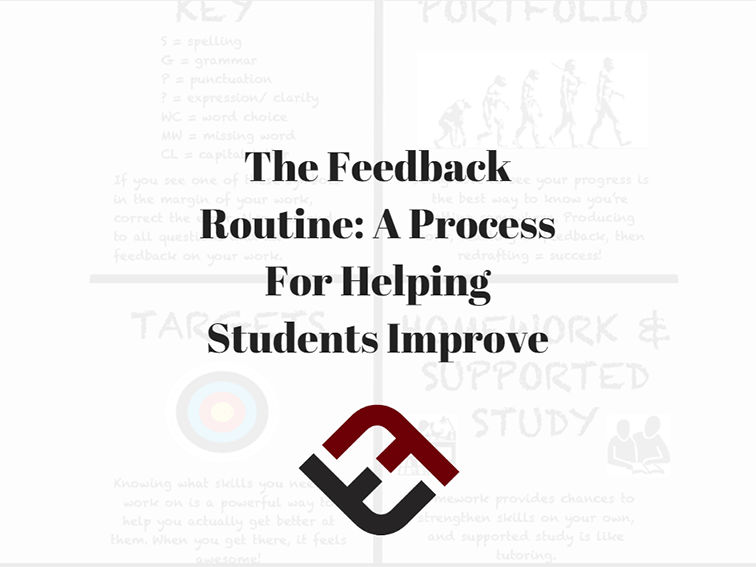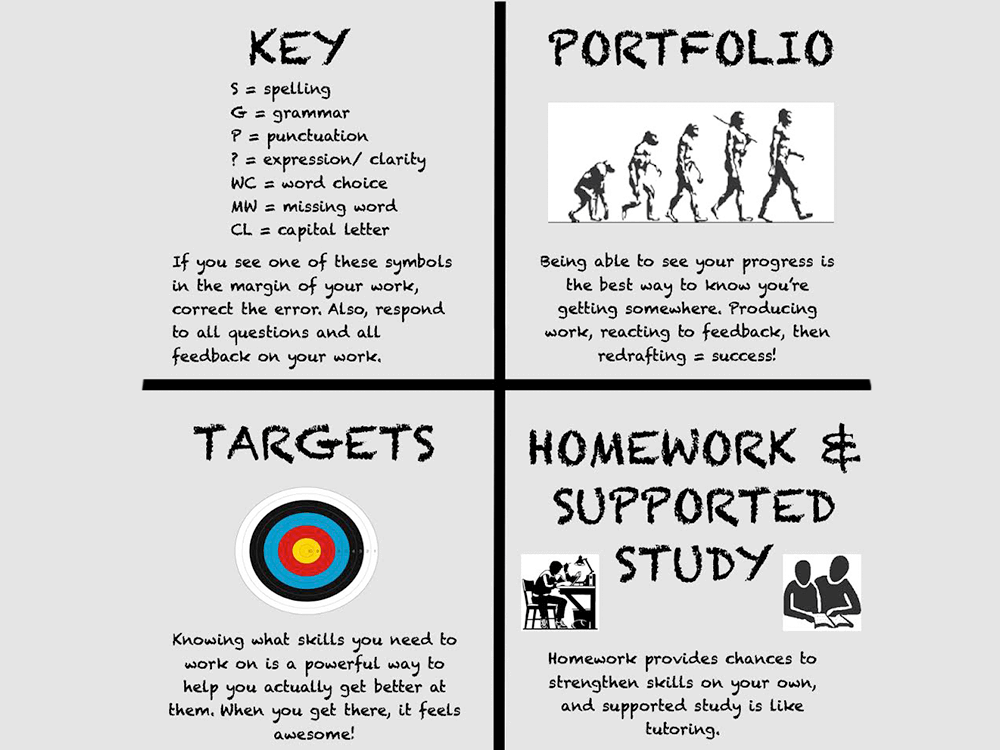
The Feedback Routine: A Process For Helping Students Improve
by TeachThought Staff
This is the second article in a series of 4 discussing strategies to assist in becoming a better teacher (the first was 4 Questioning Strategies For Effective & Thoughtful Teaching). Each article is based around a poster that I have up in my classroom, with each poster having 4 sections that deal with a general topic I want to work on in my teaching: Questioning, Feedback, Classroom expectations, and Listening.
As we often discuss at TeachThought, learning feedback for students is imperative to allow students to understand what they need to do to improve.
There are numerous excellent discussions to be found on the efficacy of feedback, how often to give it, and what the feedback should be, but I decided to create a visual representation that I could pin up on my wall of what I thought were the cornerstones of feedback. The poster is for myself and the students to remind us of the feedback routine in the room.

The first quadrant is a ‘key’ to marks I make in the margins of students’ work. It’s a very quick way to indicate if errors are present. It can be done in several ways depending on how much scaffolding you want to give a student: you can underline the error and add the relevant mark in the margin, or if you want to challenge students you can just add the mark in the margin. If it’s a spelling error, I have students write out the word 3 times.
If it is persistent punctuation errors I have students complete worksheets dedicated to the specific error, and glue them on the next page. It is likely that your English department uses a form of this, but getting it implemented across the whole school is where the real benefit lies, as students get a consistent message of how to correct their work.
The quadrant also discusses the need to respond to all feedback offered. In terms of making further progress, the most productive feedback is that which asks the student to actually do something (and often in a different colored pen so the additions are visible), and even more powerful, is the feedback that is related to the target that has been set for the student.
See also Why Did That Student Fail? A Diagnostic Approach To Teaching
The second quadrant is about keeping a visible record of progress in the form of a portfolio. Getting students to isolate and display specific tasks in which they evidence progress is a great way to help them see that they are improving. It also acts like a mini resume, demonstrating to anyone who wants to see it that they are someone who works to improve their understanding of concepts.
I have students submit their first attempt in a major assessment to Seesaw, and then their second version, which has been improved based on feedback given. Even after one assessment, it’s easy for anyone to see that improvements have been made. But over time, the visibility of progress is obvious, and that’s a source of great personal pride for the students.
The third quadrant is about setting appropriate targets. Target setting can be an extremely powerful tool in the teacher’s arsenal if used to effect. Targets should be brief, but actionable, and things that the students can actually do if they were on their own. Setting a target of improving spelling is too vague, as it doesn’t tell a student how to do it.
Setting a target of learning specific spelling rules would be better. Feedback on work then should be in relation to the target set. Students then get a sense of immediate achievement as they work towards mastering the target. Targets should also be adjusted each half-term (@6 weeks). Who sets the target ideally should be a cooperative affair between the teacher and student, but in some cases, the teacher may need to very much guide the process.
The fourth quadrant is about providing opportunities for students to get their own feedback on their skills. Completing tasks at home with no assistance tells students a great deal about their levels of proficiency in a subject. Teaching students about self-evaluation and self-assessment is a useful lifelong skill, but again, teachers shouldn’t assume that students know how to do this.
Providing evaluation sheets begins the culture of self-assessment and writing personal targets, as students learn to identify areas of weakness, but then, and perhaps more importantly, begin to consider strategies to rectify the issues.
Conclusion
Learning is about movement and growth, regardless of the starting point. Providing effective feedback helps students realize where they need to go to improve, and teachers who create a context where that understanding is managed, greatly assist students on that journey to success, and progress.
The Feedback Routine: A Process For Helping Students Improve
